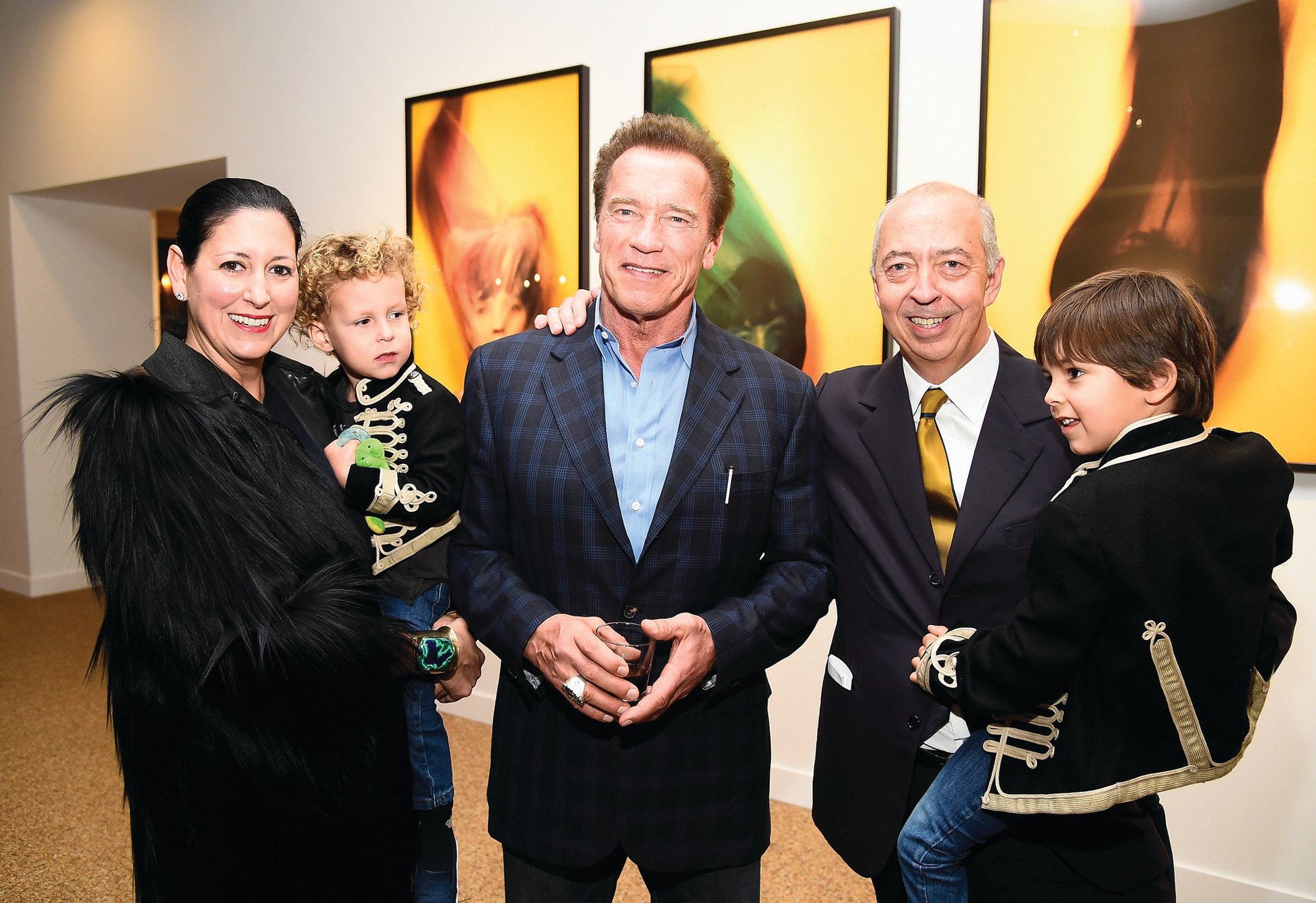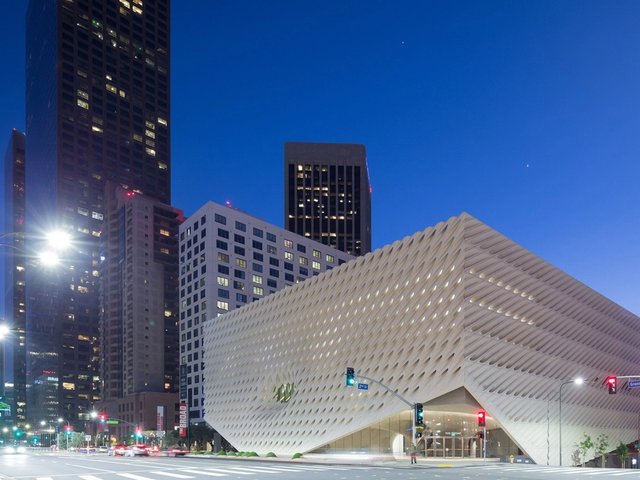In the hours before the opening of his new gallery in Hollywood, Benedikt Taschen is monitoring the works of art and making adjustments. Even as celebrities—Arnold Schwarzenegger, Steven Tyler, Pamela Anderson, Jack Nicholson, David LaChapelle—stream in to see David Bailey’s photographs of the Rolling Stones, BT (as he is known within the community he has built) assesses the works on view. His commitment to perfection is on full display. Meanwhile, A-listers mingle with misfits and outliers—authentic Taschen.
The Taschen Gallery, a 6,400 sq. ft, mid-century space that opened in late 2014 to show temporary exhibitions, is the latest endeavour of BT. Born in Germany in 1961, the iconoclastic book publisher, art collector, provocateur and visionary has made Los Angeles his home for the past two decades. BT and his eponymous publishing company consistently challenge and delight audiences with a catalogue of art books that encompasses every possible definition of “art”. The often oversized and always beautifully designed volumes include career-boosting monographs of artists such as Albert Oehlen and Christopher Wool, lavish reproductions of Old Masters, scintillating “sexy books” (as BT calls them) like The Big Butt Book, and luxurious encyclopaedias of birds, tree houses, palm trees, Case Study houses, typefaces, superheroes and more.

At a time when the book publishing world is faltering and the old powerhouses are going digital, Taschen is running in the opposite direction. The 35-year-old company is growing, and even accelerating the production of lush print volumes, many of them special editions that include original works of art. It has an old-world feel, closer to an 18th-century bookmaking collective than a worldwide publishing empire.
A constantly morphing commune of editors, authors and designers is spread across the world, floating in and out of projects, making pilgrimages to wherever the master craftsman may be found: Los Angeles, Berlin and Cologne are among the frequent destinations. As I learned from publishing a book with Taschen, Beyond the Wall: Art and Artifacts from the GDR (2014), knowing BT’s physical whereabouts relies on an invisible network of free-flowing interconnectivity. There is no organisational chart; clusters of individuals come together to find paper stock, edit text, track down bookbinders and magically (it sometimes seems) create books.
Many of those in BT’s milieu have Taschen at the end of their names. Marlene, Benedikt’s eldest child, is the Italy-based director of new business, Charlotte helps to manage the Taschen Gallery and son Benedikt founded his own pop-up gallery. BT’s closest partner is the philanthropist Lauren Taschen.
BT and Lauren’s home base in Los Angeles, the UFO-like Chemosphere—designed in 1960 by John Lautner—is the closest thing my generation will experience to Warhol’s Factory. People are constantly coming and going. An assistant carries dummies of a new book; a visiting artist swims in the pool (the place is clothing-optional); the film-maker Werner Herzog huddles in a corner, telling stories about near-death experiences he had as a child.
At the middle of the storm is BT, obsessively reviewing the typeface of the page numbers, hyperfocused in the midst of distractions. Perhaps all the activity is conducive to his productivity. Since he is personally involved in every project—you can be sure that every Taschen book has been overseen by the man himself—progress relies on his marathon working streaks, which often go on all night long.
BT’s personal art collection is one of the most esteemed in the world. As with books, his primary criteria are “intriguing” and “authentic”. Market value and investment potential are secondary. Yet precisely because of his discerning eye and power as a tastemaker, many of the artists he has collected have become household names. In May, two works by Martin Kippenberger and Jeff Koons, collected by him in the 1980s, sold at Christie’s for a combined total of more than $27m.
So what’s next for BT? He is embarking on the construction of a 200-acre art ranch in Malibu, designed by Jorge Pardo. His collection of people, his own particular constructed community, will no doubt live among the art. His strange and wonderful universe makes perfect sense in his adopted city (he is from Cologne). Viewed by outsiders as one giant construct of Hollywood, beaches and palm trees juxtaposed with moral and legal corruption, Los Angeles seems an unlikely home for high art or complexity. Yet anyone who has spent much time there knows that the authentic city is profoundly heterogeneous and full of creative work that is both shaped by and exceeds Hollywood frames.
BT may have spent the past decade challenging norms and expectations in Los Angeles, but he is also a product of the complicated, often contradictory, formula that underpins the chaos of creativity in the city.


